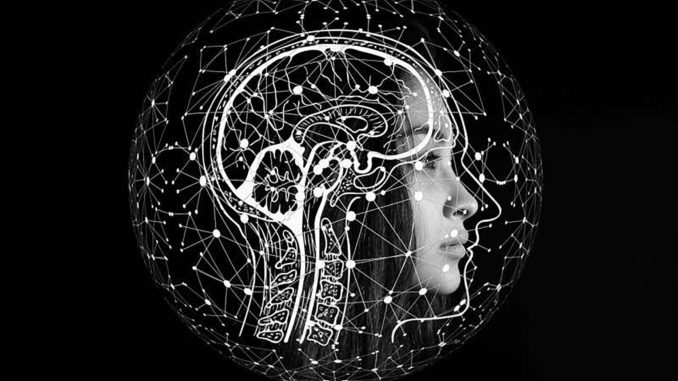
Note: This article is republished in it’s entirety from the personal website of Tim Woolworth.
This is the first article in a series of paranormal-based articles that will attempt to elucidate the role of consciousness in paranormal research. In this particular article, I express how I came to understand that consciousness affects all facets of paranormal research thru the use the ITC.
I started my journey into instrumental transcommunication a bit over a decade ago. When I started, I was as naive as a “ghost hunter” could be. When it came to paranormal investigation, I firmly believed that I was in contact with spirits that either lived in or frequented the places where I was practicing ITC. If I was in a jail, the communication must be from a prisoner. If I was at an asylum, I must be communicating with a resident.
It was a closed case. Done.
To this very day, many ghost hunters still believe the exact same thing. They go into a location and speak to the “spirits” that lived there.
It took me a while to realize that there was so much more to communication than talking to a localized spirit. In fact, as I look back, it was an embarrassingly long period of time as I didn’t think outside of this mould for well over a year. It didn’t help that I was getting reinforcement of this idea by more experienced ghost hunters I conversed with and from the websites I was reading.
When I was starting out with ghost box ITC, I was also told that I should never, ever, under any circumstances, practice ITC at home because it was the worst thing I could do. I was even told by very well-known paranormal figures not to use ghost boxes before the technology became more well-known. In all fairness, this was over a decade ago when the technology wasn’t understood and there was only a relative handful of people in the world practicing ghost box communication.
I didn’t start to make real breakthroughs in ITC until I chose to ignore the advice I’d received and started conducting ITC sessions at home regularly. Practicing at home allowed me to shape my perception of communication. It helped me to classify communication and postulate theories. I worked at a fevered rate from 2011 thru 2016. This is when I was writing articles on my ITC observations consistently on my ITC Voices website. Through experimentation, listening, and more importantly, reading. I began to realize that there was something to ITC that no one else was addressing: consciousness. More importantly, I realized that all forms of paranormal investigation are directly influenced by consciousness.
It hit me like a bolt out of the blue.
The paranormal world was, and still is, hell-bent on trying to put all paranormal anomalies and ITC into the box labeled “ghost” (pun intended). I think this is a huge disservice to the field and we really need to move past this idea which is the onus of this article and forthcoming articles in this series.
Over the course of lecturing at paranormal conferences over the last several years, I have tried to instill in audiences full of ghost hunters that consciousness is the key to understanding the phenomenon that we all love exploring. One of the keys to doing this is through a careful refinement of the definition of the term ITC.
When Senkowski created the term Instrumental Transcommunication as an umbrella term for all the forms of communication we were receiving, he was ambiguous as to the exact definition of the term. Other ITC researchers have made attempts to define ITC, but they fall short in defining the breadth of the topic. For example, noted researcher Mark Macy’s definition is “Instrumental Transcommunication (ITC) means that the messages coming from beyond will be received and/or stored by use of technical means.”
Over the years, I have worked to refine the definition of ITC to be all-encompassing of methodologies and theories that are still being developed and realized. My current working definition is:
Instrumental Transcommunication, or ITC, is the use of independent, third-party instruments which record and provide a mechanism for the review of communication from discarnate consciousness of an unknown origin.
There is a lot packed into that definition that I’ll break down for you.
The term “independent third-party instruments” means that you are using an instrument that is independent of the ITC practitioner. For example, when you conduct electronic voice phenomenon (EVP) sessions (which is a form of ITC), you are using an independent instrument – the audio recorder. The recorder can be analog or digital, that doesn’t matter. The recorded is impartial, it either records EVP or it does not. It stands alone. It is independent.
These independent third-party instruments must be able to not only record communication, but also supply a method for review of the communication. When using audio ITC, it needs to be recorded. This is also true of all forms of ITC. If evidence cannot be reviewed, then it is not evidence – it is only anecdote.
Finally, we are dealing with discarnate consciousness of an unknown origin. As I have publicly stated since the first iteration of the ITC Voices website, we simply do not know who, or what, we are communicating with – ever. A “spirit” may claim to be dead; it can also claim to be alive. In fact, these are very commonplace. But did you ever consider that you may be communicating with another investigator, yourself or a person known to you who is alive and well? What about communicating with alien life forms? There is also the possibility we are communicating with entities that have never had a bodily form. Finally, we may also be creating communication via psychokinesis (PK).
In short, we can never lay claim to an absolute knowing of what we are communicating with. To do so is a huge disservice to the field and more importantly, and family or business that you claim to be helping during an investigation.
The only thing we can absolutely, positively be sure of is that the communication has conscious intent behind it. When we receive positive communication, we must realize that there is a sentient being who wished to communicate and successfully made contact through our physical equipment. As laid out above, we do not know the source of that communication which leads us to use the term “discarnate,” as in having no physical locus point for the communication itself.
In forthcoming articles in this series, I will be diving deeper into the role of consciousness during paranormal investigation. By the end of this series, you will have a more refined, yet likely less precise toolkit for paranormal investigation.
If you found the content in this article to be of any value to your paranormal studies, please let us know in the comments below. Feel free to share this article with your friends as well because if you found it interesting, they might too.
Do You Want To Know More?
Our content creators also have podcasts that go much deeper into paranormal topics.
Tim Woolworth’s Walk in the Shadows, an episodic masterclass that consists of a deep dive into all things Fortean, paranormal and supernatural.
Rick Hale teams up with Stephen Lancaster in The Shadow Initiative where they explore various paranormal topics and discuss current paranormal news.
Please check these shows out and visit Paranormal Study social media to keep up to date on articles and all the things our authors are doing.



Be the first to comment